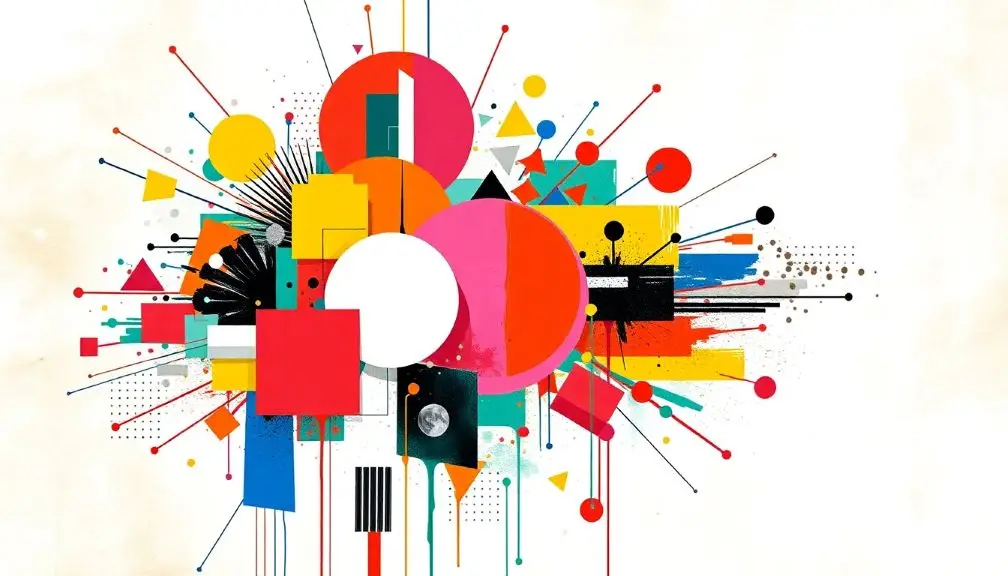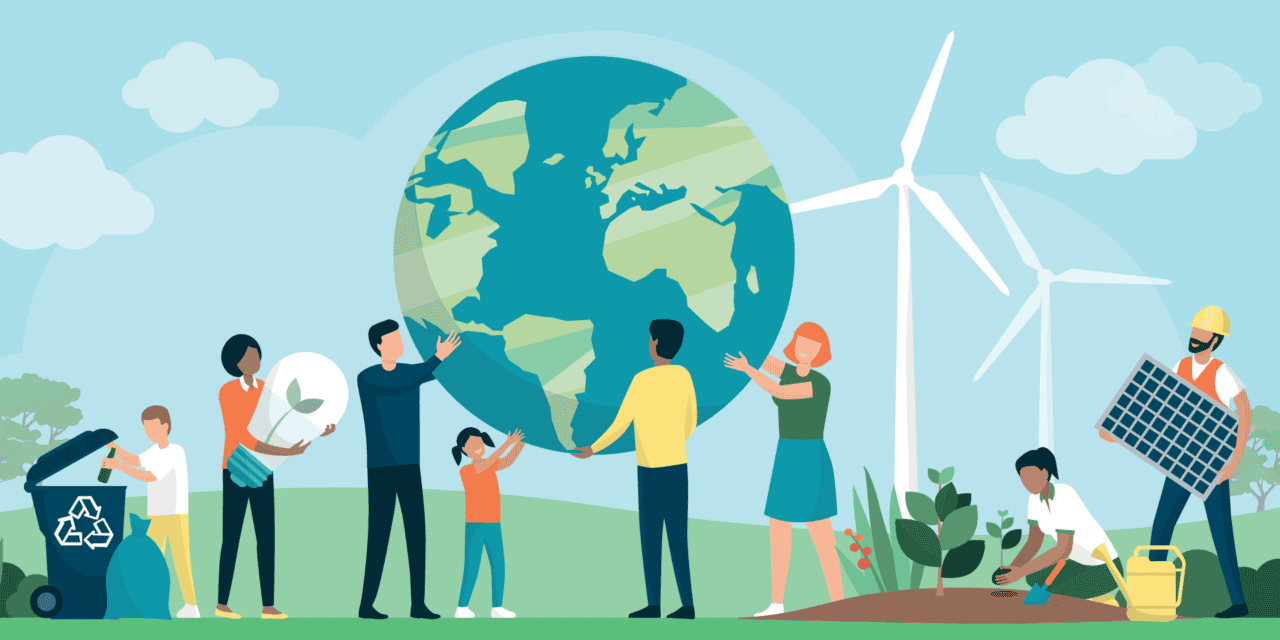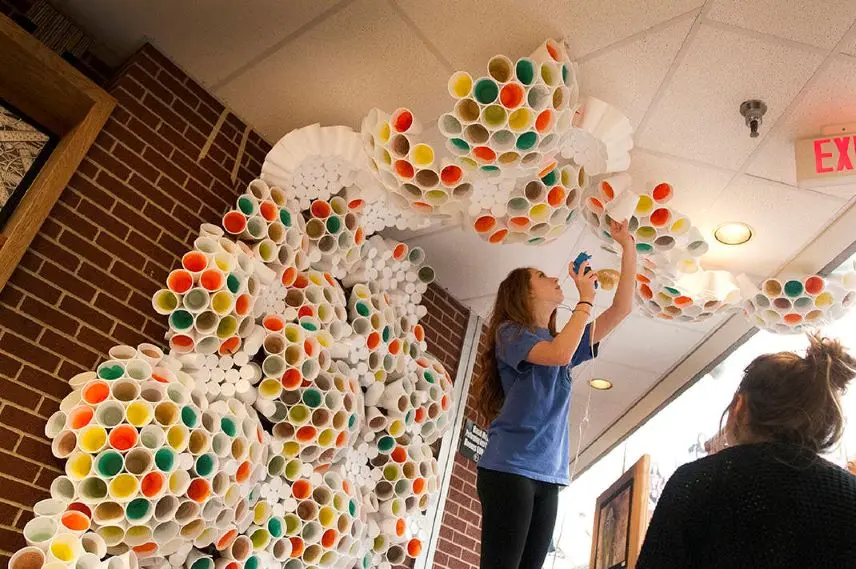There is no easy way to say it—conveying the urgency and immediacy of climate change is challenging. It is important to provide graphs and values, but graphs and values can easily overwhelm and disconnect the audience because of their vastness. This is where art comes in! Art enables the engagement of the audience emotionally.
A well made artwork will not only allow audiences to feel the environmental crises while they are happening, it will also create moderate action on the part of the audience. It could be a stunning image, an interactive element, or even the ideas behind the project all making bold statements about sustainability.
Art can be an effective way to raise awareness, build a community of like-minded people and, possibly the most crucial change, motivate action. Art can inspire thought, create feelings and elicit mindful behavior in more ways than other forms.
Historical Context: Art in Environmental Movements
Art and the environment have a long and intertwined history. Think back to the Romantic painters of the 19th century who captured the sublime beauty of untouched landscapes. Artists like J.M.W. Turner and Caspar David Friedrich showed us the fragility of the natural world even as industrialization loomed.
Fast forward to the 1960s and 70s, and you’ll find the Earthworks movement—a group of artists, including Robert Smithson and Nancy Holt, creating monumental land art that confronted humanity’s relationship with the planet. By the 1990s, the concept of eco-art began to take shape with artists like Agnes Denes planting literal fields of wheat in Manhattan as a statement on sustainability and Joseph Beuys leading reforestation efforts through conceptual art.
Contemporary Artistic Strategies

The artistic community is increasingly taking on a new and inventive role, pushing the climate conversation further forward – of which, know three examples.
Sensory Immersion
Immersive art, for example, are art works that reshape climate data into felt and emotional experience. Olafur Eliasson has even made ice installations. Ice Watch – which engaged giant blocks of glacial ice to decay and melt while occupying urban space – pulled climate change in closer with the aesthetics of global warming, as presented in the street and sticking around longer with variety to reflect the way selective climate affects urban life. The immersive quality of such art projects – like Milica Zec’s Tree – where audiences seat themselves in roles to the endangered rainforest, connects the audience at an embodied level of climate change knowledge, through VR experience.
Humanizing Data
Art has a proclivity for the abstract, so the climate data becomes something we can hang a lot more meaning on through art. For instance, Chris Jordan’s series Running the Numbers included stark reminders of statistics when they were given narrative, such as a dead albatross with a carcass filled with plastic, reminding us of humanity’s environmental waste. NASA has also tried to create sound and sonification projects, composing sound from data, a format of knowledge that may be alien to those who are not used to mapping data from scientific data.
Community Involvement
Participatory art is taking the world abstractions and making a direct action into the world with ideas for collaboration with – such as The Climate Ribbon which is an ARTPORT project inviting people to make climate ribbons as either hopes or fears for or with climate change and tie them and leave those rip to share documents of concern wherever there are common spaces in the world. Street artists are even getting in on climate action and include messaging surrounding climate consciousness through public art, Banksy for example.
Psychological Mechanisms of Impact
But why does art work so well in addressing climate change? Because it taps into our psychology. Here’s how:
- Emotional Resonance: Memorials for extinct species, for instance, create moments of grief and connection that can inspire empathy. A Yale Climate Communication study in 2023 found that such emotional engagements significantly increased participants’ willingness to act.
- Cognitive Reframing: Climate fiction novels and speculative storytelling help us rethink what’s possible, shifting risk perceptions and inspiring problem-solving mindsets.
- Behavioral Nudging: Subtle interventions like eco-graffiti campaigns have proven effective; a 2022 University of East Anglia study reported a 37% increase in community participation following such efforts.
Institutional Collaborations
Institutions are recognizing the power of art in climate activism. The United Nations Environment Programme (UNEP) launched the Eyes on Earth initiative, showcasing exhibitions that merge art and environmental science. In the museum world, the Tate Modern has hosted exhibits like Ecologies that celebrate earth-centric art.
There’s also collaboration across disciplines. Artist-scientist residencies at organizations like CERN and MIT have led to fascinating projects, blending cutting-edge research with creative storytelling to foster innovation around climate solutions.
The Challenges and Critiques
Certainly, there are challenges to using art as a means of climate action. Some have noted that viewers learn to have “compassion fatigue” as they repeatedly see the same emotionally challenging themes, which dulls the ability for the witness to emotionally calibrate. Relatedly, the climate-related art by corporations, even with the potential positives, can shift to green washing, allowing the corporation to maintain a climate friendly status while taking no action.
Furthermore, it is a tricky balancing act for an eco-artist to depict something visual appealing while also getting the message across, a hurdle that is every artist’s battle.
New Frontiers
New frontiers will open up for art about climate in the artificially intelligent, deep fake, controlled reality show years. For example, AI-generated art brings forth a number of discussion points: What are the ethics of using machines to create works of art about organic crises? BioArt, or art that engages with living organisms in some way as part of the creative process of art, is a frontier that has moved through many forms from algae installations to genetically modified installations.
Similarly, artists are using blockchain NFT marketplaces to create new funding sources for carbon offsets and reforestation, igniting new conversations and funding possibilities around new digital art spaces.
Actionable Recommendations
So, how can we better harness the power of art in the fight against climate change? Governments could implement public art mandates focused on sustainability, integrating climate-centric installations in parks or urban landscapes. Climate institutions like the IPCC might consider embedding art in their reports, using visuals and storytelling to enhance accessibility.
Additionally, educational institutions could establish cross-disciplinary graduate programs that combine art, science, and environmental studies to train the next generation of climate communicators.
The Palette of Possibility
Art is, at its core, about connection. It’s about taking something complex—like climate science—and translating it into something that resonates on a human level. From emotive installations to participatory projects, art invites us to see our world differently and take action accordingly.
As we face the immense challenges of a warming planet, investing in art could be one of the most unexpectedly powerful tools in our climate toolkit. Let’s embrace creativity and culture as drivers of change and paint a more sustainable future for all.


